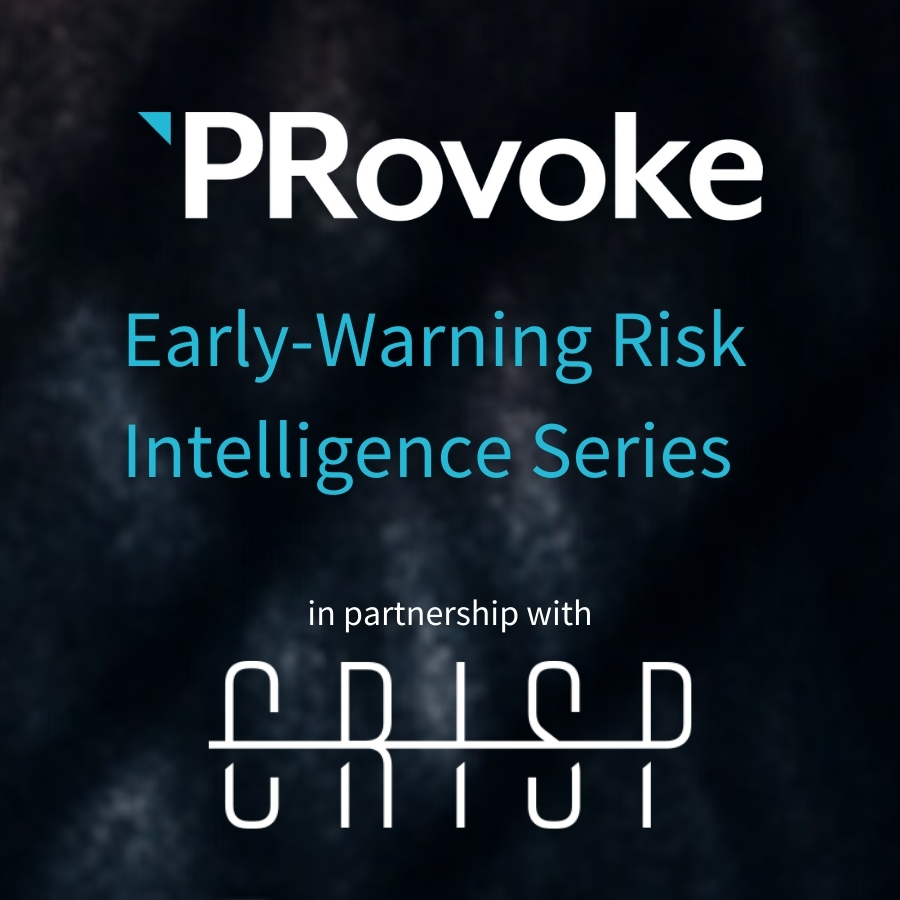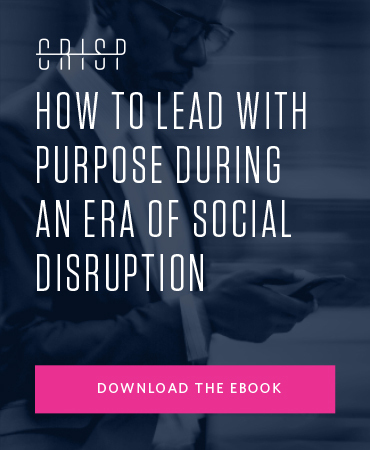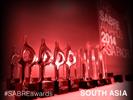Mark Henricks 26 May 2021 // 6:29PM GMT
.jpg)
When America’s biggest fuel pipeline can be shut down by hackers — and forced to pay a reported $5 million to criminals who inserted ransomware in its system — online risks are clearly significant. But online threats aren't isolated incidents, any brand can face potentially costly risks to its reputation and image from videos, tweets or other parts of the web.
With that in mind, PRovoke Media convened corporate communications leaders to evaluate the current online threat landscape. The salon explored how leaders are coping with real-life situations — and using those experiences to guide communications policy, strategy and tactics. The roundtable was hosted in partnership with Crisp, a provider of early-warning risk intelligence.
Participants in this discussion:
Damon Jones, P&G, Chief Communications Officer
David Tovar, McDonald's, US Chief Corporate Relations Officer
Jano Cabrera, General Mills, Chief Communications Officer
Kathy Krenger, Hyatt Hotels Corporation, Senior Vice President, Global Communications
Vikram Sharma, Crisp, President
Moderator: Aarti Shah, PRovoke Media, Executive Editor
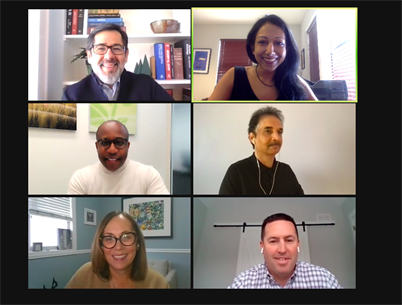
Vikram Sharma, president of Crisp, noted the scope of today’s playing field. “While things were a bit noisy the last couple of years, in 2021, things have been at a new level,” Sharma said. “We live in a world today with four billion people using social media on average on eight platforms. If you sprinkle in a little bit of mis- and disinformation and noise, the amount of networking and conversation that’s happening puts brands in a very, very challenged environment.”
Sharma noted that the problem goes far beyond dissatisfied customers giving bad reviews, because corporations today don’t have the option of not participating even in previously untouchable conversations.
“In the new environment we are now seeing employees and consumers wanting to see a commitment to value and purpose in a way that we haven’t seen in the past, so that’s a really new development,” he said. “So things that used to happen in the dark corners of the internet, harder to find, unknown, unexpected things — these are a reality that corporate America faces today."
‘The pandemic scrambled everything for everyone’
Managing online threats to brand reputation calls for a great deal of flexibility, resourcefulness and paying attention to concerns of stakeholders, among other factors. And as difficult as that task may be, the impact of recent events has created a situation where there’s no escaping it.
“The pandemic scrambled everything for everyone and then shortly thereafter we found ourselves having a long overdue conversation on systemic racism,” said Jano Cabrera, who serves as chief communications officer at General Mills. “And when you combine the first with the second what that resulted in was an expectation that corporations would have something to say.”
David Tovar added that, for McDonald’s, which has coped with a CEO’s firing and multiple lawsuits from Black franchise owners in recent years, there seems to be little difference now between corporate issues and consumer issues. “Consumers are voting with their pocketbooks and wallets every single day and they are going to choose the companies and the brands that they want to associate with themselves based on lots of things that go beyond price and promotion,” he said.
Hyatt Hotels also faced numerous challenges this year after social media users called out Trump supporters not wearing masks at the hotel in the days around the January 6 attack on the US Capitol. Then, after hosting Conservative Political Action Conference, the hotel chain had to address hate after the event’s stage was compared to a Nazi symbol.
“There’s a fine line when you’re a hospitality company,” said Kathy Krenger, SVP of global communications for Hyatt. “Your doors are open to everyone of course, you’ve got to be very careful, you never want to – I think I’m stating the obvious here but – be discriminatory in any sort of way. In the past, safety was just always the filter for most hospitality companies...Then there’s more the emotional safety part of it. It’s not just about the group that might want to come to the hotel, it’s about the other groups and guests who are in the hotel, it’s about the colleagues who are servicing that group and it’s about who we are.”
PRovoke Media’s Aarti Shah asked the panelists how universally recognized brands like theirs take stands on topics for which there is nothing approaching universal consensus. However, P&G’s chief communications officer Damon Jones, says that’s not exactly the right question because agreement is not the objective.
“What we try to do is to not take a stance for something or against something, but to speak with our own voice on why we believe the conversation is important and what we believe the connection is to our brand values or our corporate values,” Jones said.
Referencing the brand’s 2017 “The Talk” commercial depicting a Black mother’s conversation with her child about racism, he said rather than being about race-baiting, as some critics asserted, the ad connected to the brand’s position that every mother wants what’s best for her child. He did add, however, that it’s important to test messages with all audiences and not just the target group, to see what reactions might be.
“I think the measure of a healthy company is one where consumers look at it and they think the products, the services, and the good that you do, line up nicely,” General Mills’ Cabrera added. “It’s not that one is out of whack with the other.”
‘They want us only to be beloved and it’s not the reality right now’
Sharma asked what to do about those who are, inevitably, dissatisfied with a brand’s message on a social issue. “Do you expect to be forever dealing with the same thing over and over again because you are trying to get everybody happy or do you know that a third of them are just not going to be happy?” he asked.
After Jones reiterated that reinforcing corporate values, not consensus, was the goal, Hyatt’s Krenger raised the problem of handling expectations of the company’s leaders. “You get just as many ‘thank yous’ as you get ‘this is terrible’ — and managing that internally is the hardest part of it sometimes,” she said. “They want us only to be beloved and it’s not reality right now. For me anyway, a big part of my job is trying to help everybody be ok with not being ok.”
McDonald’s Tovar added, a challenge is defining a set of principles that can be adhered to. “I spend a lot of time in my day actually trying to convince people that we shouldn’t speak out on certain things,” he said, noting how people’s passions can vary considerably and McDonald’s values include serving everyone. “But if we see something that is in contradiction to our values that ultimately becomes the barometer from which we look through and then we determine the appropriate thing that we might say and to what audience.”
For instance, when a rumor circulated false information that McDonald’s donated to Donald Trump’s campaign, Tovar said McDonald’s refuted the claim on social media noting the company does not contribute to presidential candidates.
“But we knew we weren’t going to stop the tidal wave of this thing just working its way around,” Tovar recalled. “And so instead what we looked at were who are the key stakeholders that we wanted to make sure didn’t buy into this. Number one, employees. So, we did do some extra communication with employees to make sure that they understood."
‘For the more complex the discussions, we try to get those off social media’
Shah's next question referred to coping with multiple sources of brand damage. “How are you tracking what is happening on all corners of the web and how can you assess whether they will damage your brand’s reputation in the long term?” she asked.
Jones said it takes multiple resources, including easy access to the combined insights of his entire team, the ability to intuit what it all means and the capacity to mount a quick response. “It really requires a lot more contextual intelligence of every single communicator in our organization.”
He added, the reality is, many hot button issues are quite complex. For instance, he pointed to P&G’s policy of not testing on animals except when required by law. This caveat adds several layers to P&G’s stance. “So the more complex the discussion we try to frankly get those off of social media because, again, trying to communicate in a simple visual or 140 characters just isn’t working and I don’t know that it will ever work,” he said.
‘We’re not going to be able to disprove every rumor that’s out there’
Sharma next brought the fact that, today, even the most outlandish brand criticisms can sometimes find sizable receptive audiences and even become front-page news. He cited the 2020 example of furniture seller Wayfair that was exposed to a firestorm of controversy after social influencers falsely accused it of human sex trafficking. Fact-checks showed the claims to be groundless — and it’s not even clear how the originators ever conceived there was a shred of truth to them.
P&G’s Jones sympathized, referencing a case in the past year when some of the company’s brands were said to use prison labor. The rumor began with an Instagram post that cited a years-old source from an organization that sounded official, but Jones said he was frustrated trying to disprove and untruth. While P&G did issue direct denials, he said the best way to deal with these sorts of claims is likely to be the sort of organization that seems to be better than that.
“We’re not going to be able to disprove every rumor that’s out there,” Jones said. “But on the whole if you know we treat our people well, we do the right things for the environment, we do live our values, that provides, we believe, some degree of insurance and insulation.”
‘What you don’t see is important context and has to be part of the conversation’
Another reason managing reputation has become more complicated is the prevalence of recorded video or audio that, in some cases, illuminate how a situation truly played out or in other cases, twist the context to comply with a particular narrative. Hyatt’s Krenger recalled how difficult it was to provide additional information around video footage — even when a reporter provides more context. “That video became the biggest part of the story. I couldn’t say anything to get people to read the truth of what was happening in that story,” she said, referring to video footage that circulated about the chain's DC hotel and mask usage around January 6.
“Video snippets sometimes do reveal truth, absolutely, but we can’t lose sight of the important lesson that reality TV has taught us all which is editing matters and selective editing,” said General Mills’ Cabrera. “What you don’t see is important context and, again, that has to be part of the conversation for brand stewards.”
General Mills also recently faced a crisis around a viral image when a podcast host tweeted a picture of what looked like shrimp tails from his cereal box.
Tovar, however, said another challenge for large brands with many customer touchpoints is videos might depict unflattering moments that don’t reflect the company’s overall policies. “I use this analogy, we’re about the size of Philadelphia. Every day in Philadelphia there’s people who get into fights and there’s robberies and there’s this and there’s that and that happens at McDonald’s too unfortunately,” he said. In those situations, the protocol is to apologize and reinforce the policies that were broken.
‘It’s never been more complicated than it is today’
The future of managing online brand risk is actually rosier than it might seem. The consensus among these participants is that the communications function will get bigger budgets and more resources going forward. In addition to the growing presence of online reputation threats, another factor is the declining importance of television advertising, which traditionally has not been part of the communications portfolio.
“In general, the job of holding on, securing, strengthening reputation tends to lie with the CCO,” General Mills’ Cabrera said. “It makes sense product, price, promotion, even purpose, is probably going to move over to marketing which is where it should be, but on questions of reputation it really is this function and it’s never been more complicated than it is today and it does mean you have need expanded tools in order to do this.”
Unquestionably, one of those tools has to be an extraordinarily heightened sense of vigilance, because today threats to brand image and reputation can come from so many places. And, given enough shares, the truth of a video or other post doesn’t really matter, Sharma notes, meaning brand risks can be essentially completely divorced from reality.
Sharma summed up his company’s approach to serving clients concerned about brand risks by emphasizing the importance of paying attention to the right voices and the right issues. “We are listening because we know about what your issues are, who the instigators are likely to be and where to listen. So we can find the smoke before it is even a spark or a flame or a fire.”









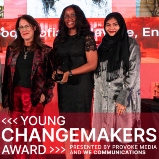












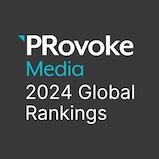












.jpg)


